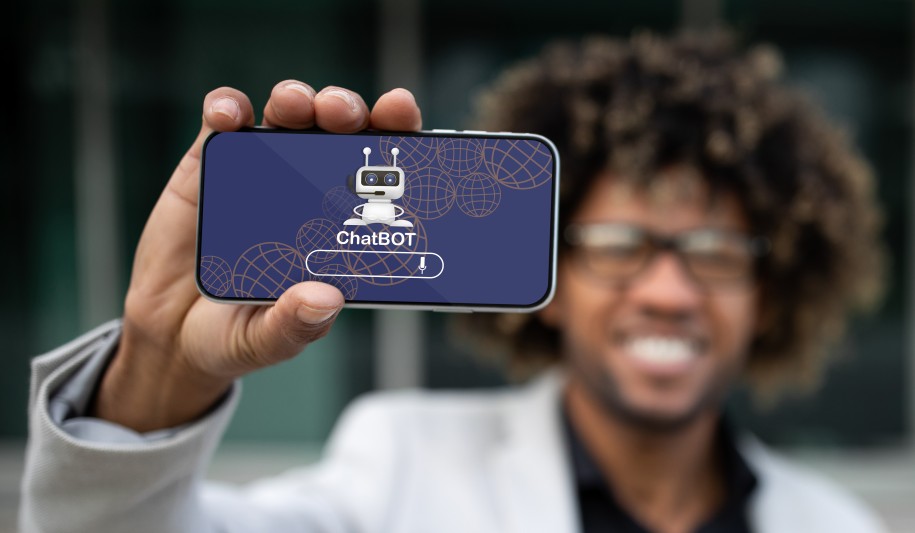As the world of marketing continues to evolve at an unprecedented pace, staying ahead of the game means keeping up with the latest trends and tactics. From emerging technologies to evolving consumer behavior, the marketing landscape is constantly changing, and businesses that fail to adapt risk falling behind.
To help you stay on top of your game, we’ve put together a comprehensive guide to the top 10 trending marketing topics you need to know about.
1. Artificial Intelligence in Marketing
Artificial intelligence (AI) is a revolutionary approach, disrupting how businesses approach marketing. With the ability to analyze large amounts of data, identify patterns, and make predictions, AI is transforming how companies target and engage consumers.
One of the key areas where AI is making a significant impact is personalization. By using machine learning algorithms and feeding marketing research topics to AI, businesses can tailor content and messaging to individual customers based on their behavior, preferences, and interests.
Another area where AI is transforming marketing is chatbots and conversational marketing. Chatbots are becoming increasingly popular as a way for businesses to provide personalized customer service and support. By using natural language processing, chatbots can understand and respond to customer queries in real-time, 24/7.
As a result, customer satisfaction gets the attention it deserves and the marketing experts are free to focus on tasks that require high priority.
Finally, AI is also changing the way businesses approach content creation. By analyzing data on consumer behavior and preferences, AI can generate content that is more targeted and relevant than ever before. This includes everything from product descriptions to social media posts and can help businesses cut through the noise and reach their target audience more effectively.
Moreover, by using multimodal AI, marketers can create more engaging and persuasive content by combining text, images, and other media formats in a seamless and impactful way. This will further enhance brand awareness and drive conversions.
2. Personalization and Customization in Marketing
One of the biggest trends in marketing today is personalization and customization. Consumers are increasingly looking for experiences that are tailored to their individual needs and preferences, and businesses that fail to deliver risk being left behind.
Personalization can be anything, whether it is targeted advertising or product recommendations that are specifically personalized. By using data on customer behavior and preferences, businesses can create more relevant and engaging experiences that drive results.
Another key area of personalization is email marketing. By segmenting their email lists and sending targeted messages that are tailored to individual subscribers, businesses can improve open rates, click-through rates, and conversions. This includes everything from personalized subject lines to dynamic content that changes based on the recipient’s behavior.
Finally, customization is becoming increasingly important in product design and development. By giving customers the ability to customize products to their individual needs and preferences, businesses can create more engaging experiences that drive loyalty and repeat business. This includes everything from customizing the color and design of a product to adding personalized messages or branding.
3. Influencer Marketing
Influencer marketing is one of the best social media strategies that involve collaborating with influential people on social media to promote products or services.
This includes everything from social media influencers to bloggers and vloggers who create content around specific niches. They are seen as experts in their respective fields and can influence their followers’ purchasing decisions.
With the rise of various social media platforms, influencer marketing is also experiencing its peak utilization. Brands can reach a larger target audience through influencers, who have already built trust with their followers. By partnering with influencers, brands can increase their brand awareness, improve their reputation, and ultimately drive sales.
The fact that influencer marketing allows you to reach a highly targeted audience is a big plus. Influencers have a huge social media marketing impact. Brands can select influencers who align with their brand values and target audience, ensuring that their message reaches the right people.
Influencer marketing can also be cost-effective compared to traditional advertising methods such as TV ads or billboards.
However, it is important to choose the right influencers for your brand. Brands should employ social media strategies where they look for influencers who have an engaged audience and whose followers align with their target market. It is also essential to ensure that the influencer’s values align with those of the brand to maintain authenticity and credibility.
Do you want to elevate your strategies by applying the latest marketing trends and best practices?
Contact Growth Hackers
4. Video Marketing
Video marketing has become an integral part of any digital marketing strategy. With the rise of video-sharing platforms like YouTube, Vimeo, and TikTok, businesses have recognized the potential of video marketing to reach out to their target audience and build brand awareness.
Video marketing involves creating and sharing videos that promote products, services, or the brand itself. These videos can be in the form of product demos, explainer videos, testimonials, or even entertaining viral videos.
The benefits of video content marketing are numerous. Firstly, videos are more engaging and memorable than text-based content, making them more likely to be shared on social media platforms. Secondly, videos can help businesses communicate complex ideas in an easy-to-understand way. Thirdly, videos can improve website traffic and search engine rankings as search engines like Google prefer websites with video content.
When it comes to creating a video marketing strategy, it is important to keep a few key factors in mind. Firstly, understanding the target audience is crucial as it will help in creating content that resonates with them. Secondly, the type of video content should align with the goals of the business.
For example, if the goal is to increase sales, product demos, and explainer videos might be more effective than entertaining viral videos. Thirdly, the quality of the video should be high as poor-quality videos can hurt the brand image.
Distribution is also an important aspect of video marketing. The video should be shared across multiple channels such as social media platforms, email campaigns, and even on the company’s website. Sharing on multiple channels will increase the reach of the video and improve its chances of going viral.
5. Voice Search Optimization
In today’s fast-paced digital world, voice search optimization has become an increasingly important aspect of digital marketing. Voice search is the technology that enables people to use their voice to search for information online, rather than typing in their queries manually.
As more and more people are using voice search to find information, businesses must optimize their websites and digital content accordingly to remain competitive.
One of the key benefits of voice search optimization is that it can significantly improve a website’s visibility and ranking on search engine results pages (SERPs). When a user conducts a voice search, search engines like Google prioritize websites that are optimized for voice search.
Therefore, businesses that optimize their content for voice search are more likely to appear at the top of the SERPs, which can result in increased website traffic and higher conversion rates.
To optimize their websites for voice search, businesses should focus on creating content that is conversational and uses natural language. This means incorporating long-tail keywords and phrases that people are likely to use when conducting voice searches.
Additionally, businesses can make sure their website is mobile-friendly and has fast loading times, as most voice searches are conducted on mobile devices.
Another important aspect of voice search optimization is ensuring that a business’s online listings are accurate and up-to-date. This includes information such as the business’s name, address, phone number, and hours of operation.
When a user conducts a voice search for a local business, search engines use this information to provide accurate and relevant results. Therefore, businesses must ensure that their online listings are consistent across all platforms.
6. Chatbots and Conversational Marketing
In recent years, the rise of chatbots has transformed the way businesses interact with their customers. These computer programs make use of artificial intelligence (AI) to initiate and simulate conversations with real people to understand and rectify their needs and queries.
They can be integrated into messaging platforms like Facebook Messenger, Slack, and WhatsApp, allowing customers to interact with businesses in a more personalized and convenient way.
Chatbots are primarily beneficial for their 24/7 availability for customer support. Unlike humans, chatbots don’t need breaks or vacations, which means they can handle customer inquiries and support tickets around the clock. As a result, you get faster response times and your customer satisfaction rates soar high.
Additionally, chatbots can handle a large volume of inquiries simultaneously, freeing up human support staff to focus on more complex issues.
Another advantage of chatbots is their ability to collect valuable insights about customer behavior. By analyzing the conversations between customers and chatbots, businesses can gain insights into customer preferences, pain points, and buying patterns. This data can then be implemented in constructing better marketing strategies, product offerings, and customer services.
Chatbots are also a powerful tool for conversational marketing. Conversational marketing is a strategy that focuses on building relationships with customers through personalized conversations. By using chatbots to have one-on-one conversations with customers, businesses can create a more engaging and interactive experience.
Chatbots can recommend products based on customer preferences, answer questions about products or services, and even provide personalized promotions and discounts.
7. Search Engine Optimization
Search Engine Optimization involves improving the visibility of a website or a web page in organic search results. The goal of SEO is to drive more organic traffic to a website by increasing its visibility and ranking in search engine results.
SEO is a complex process that involves several tactics, including keyword research, on-page optimization, off-page optimization, link building, content creation, and more. Keyword research involves identifying relevant and high-traffic keywords that users are searching for and optimizing the content of the website accordingly.
On-page optimization includes optimizing the content and structure of the website to make it more search-engine friendly. Off-page optimization involves building backlinks from other websites to improve the authority and credibility of the website.
Link building in SEO is crucial because it increases the website authority and credibility of its content. It involves getting backlinks from other websites that are relevant and authoritative in your niche. Link building can be done through several tactics, including guest blogging, broken link building, resource page link building, and more.
Content creation is another critical aspect of SEO. High-quality content that provides value to users is essential to rank higher in search engine results. Content should be optimized for keywords and should be relevant and engaging to users. Social media marketing also plays a vital role in SEO as it helps to drive traffic to a website and increase its visibility.
Get ready to supercharge your marketing strategies today with the latest trends!
8. Augmented Reality Marketing
In today’s fast-paced and technology-driven world, marketers are constantly looking for innovative ways to engage their target audience. Augmented reality (AR) marketing has emerged as a new and exciting way to capture the attention of consumers.
AR combines the physical world with digital elements, allowing users to interact with virtual objects in the real world. This technology has revolutionized the way brands market their products and services, providing a unique and memorable experience for consumers.
Augmented reality marketing has a wide range of applications across various industries. Say for example, a beauty brand can use AR to let users virtually try on makeup products without having to visit a store. This technology can also be used to create interactive product demos, games, and other engaging experiences that leave a lasting impression on consumers.
One of the biggest advantages of AR marketing is its ability to create immersive experiences that feel personal and customized. By using AR technology, brands can offer personalized recommendations based on a user’s preferences and past behavior. This not only enhances the user experience but also helps build brand loyalty and increase customer engagement.
Additionally, AR marketing campaigns can be easily shared on social media platforms, creating buzz and generating organic traffic for the brand.
9. User-Generated Content
In recent years, user-generated content (UGC) has become a powerful tool for businesses to engage with their audiences. UGC refers to any content that is created by users or customers, such as reviews, social media posts, videos, and photos.
This type of content has become increasingly popular due to the rise of social media platforms and the ease of creating and sharing content online. By using content marketing strategies, businesses can enhance their brand reputation, increase engagement, and attract new customers.
One of the key benefits of UGC is that it allows businesses to create a more authentic and trustworthy brand image. Consumers are often more likely to trust the opinions and experiences of other users over traditional advertising or branded content.
By incorporating UGC into their marketing campaigns, businesses can showcase real-life examples of how their products or services have benefited their customers. This not only helps to build trust but also creates a sense of community around the brand.
Another advantage of UGC is that it can boost engagement and encourage user participation. When customers see that their content is being featured by a brand, they are more likely to continue creating and sharing content.
This can lead to a snowball effect, as more users become aware of the brand and begin to contribute their content. UGC can also be used to create contests or challenges that encourage users to get creative and share their experiences with the brand.
10. Data and Analytics in Marketing
Data and analytics have become vital components of modern marketing strategies. With the amount of data available to businesses today, leveraging data insights has become a key differentiator between those who succeed and those who don’t.
Data-driven marketing is the process of collecting, analyzing, and using data to inform marketing decisions. This approach enables marketers to make informed choices about their campaigns and target their audiences more effectively.
Data and analytics can be used in various marketing activities, including marketing research paper topics for organizations, customer profiling, segmentation, and targeting. For instance, data analysis can help businesses understand their customer’s preferences, behaviors, and needs. This information can then be used to develop personalized marketing campaigns that resonate with customers and drive engagement.
Such strategies can be implemented on any social media platform for easing the process. It is usually performed to obtain or to drive customer engagement analysis and to take notice of their lifestyle branding.
One of the primary benefits of data-driven marketing is its ability to measure the effectiveness of marketing campaigns. By using analytics tools, businesses can track their campaigns’ metrics such as open rates, click-through rates, conversion rates, and more. This data can then be used to optimize campaigns and improve their performance.
Final Thoughts on the Most Trending Marketing Topics
As we’ve seen, the world of marketing is constantly evolving, and staying ahead of the game means keeping up with the latest trends and tactics. From AI and personalization to influencer marketing and video, there is a wide range of trends that businesses need to be aware of and incorporate into their marketing strategies.
By prioritizing these trends, businesses can create more engaging, relevant, and effective marketing campaigns that drive results. And while at it, you could go a step further and let Growth Hackers guide you professionally to achieve your digital marketing goals.
In today’s fast-paced business climate, it can be easy to get caught up in the excitement of rapid expansion and growth. However, it’s important to remember that sustained growth is crucial for long-term success. At Growth Hackers, we understand the value of sustainable growth and are committed to helping you achieve it.
Our team of digital marketing experts utilizes data-driven analysis and result-driven insights to ensure that your business is generating better leads and sales while also boosting ROI. With our proven track record of success, you can trust us to help you stay on track and thrive in the ever-changing world of digital marketing.
Reach out to Growth Hackers today and let us know your business requirements and we will get back to you as soon as we can.










